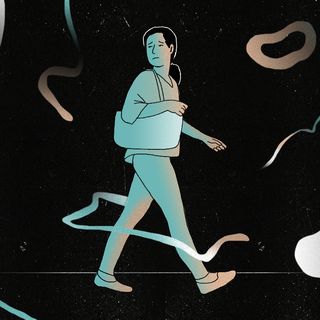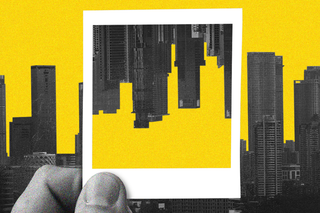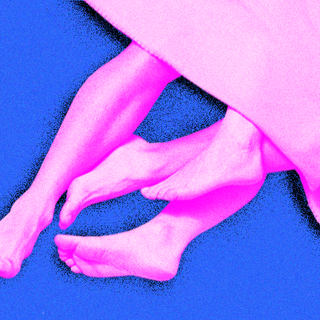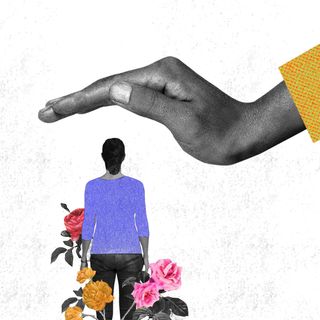
How Photographs Influence Our Memories
Research shows photographs may actually distort the truth of the moment and impair our memory — what is called the “photo-taking impairment.

Take a picture, it will last longer, goes the old wisdom The pursuit of memorializing lived reality — graduation ceremonies, family gatherings, the way the silver slivers of sunlight fall on a frozen Pangong Lake — finds its destination through the lens. The memories that cameras help us create by capturing moments through photographs exist as a thing of beauty; they feel undegradable and impenetrable.
But what about our memory, that thing of enigma evading any characterization? How does photographing events in real-time change whatwe remember — and howdo we remember it?
There are two opposing schools of thought that attempt to explain the way taking photos impacts our memory. The premise behind both is that memories are corruptible strands of reality. “Every time we recall a memory, we may accidentally alter it or diminish its accuracy. Even trivial memories are easily corrupted with mere suggestions,” Brian Resnick explained in Vox. The irrefutable truth is that the mind is not accurate; neither are these pictures asaccurate reflections of reality as one mightimagine.
But smartphones and the popularity of vintage cameras have made photography a veritable constant in our lives. One theory cautions against this pervasiveness — the very act of photographing may end up impairing our memory of events, scientists note. One study from 2018 conducted two experiments to this effect. In one, two sets of participants were asked to memorize paintings within 10-15 seconds; one set used Snapchat, and the other used a plain-old camera app. In both cases, participants were more likely to rely on the photos than individual memory. This refers to a phenomenon of “cognitive offloading,” when our brain no longer feels the need to mentally save information when people think they could rely on a photographic memory. For instance, it is a well-known concept that people are less likely to remember a piece of information when told a computer will save it, according to a 2011 study. A similar logic applies to the act of documenting instances.
The researchers of the 2018 paper also explained this tendency as follows: “Specifically, photo-taking may have given participants a subjective sense of encoding fluency, leading them to think they had already encoded the objects — not only via the camera but via their own organic memory — thus rendering them less likely to put additional effort toward encoding the objects in the time that followed. Said differently, photo-taking may have led participants to think that they had already encoded the paintings, making them less likely to employ the type of encoding strategies that would have been useful for improving memory.” The act of taking a picture triggers a sense of disengagement with the moment at hand; the brain then encodes the moment less deeply.
Related on The Swaddle:
Why We Always Think We Look Bad in Pictures
Moreover, the trick to forming a memory is to pay attention; if we direct the attention to the photograph instead of the event, our brain won’t have the capacity to store short-term memories in the long run. In other words, constantly taking photos takes us out of the moment and diminishes our ability to recall experiences. But this is not the same as arguing that technology or smartphones are making us “duller” per se. “It’s shifting the way our minds work, refocusing our attention,” Resnick explained.
This brings us to the opposing school of thought — one noting how photographs and cameras may actually work to augment our memory of experiences. This happens by magnifying our attention to one given thing. In one study, cognitive scientist Alixandra Barasch analyzed the visual experiences of people who took pictures in a museum, as compared to those who didn’t; the former category was more likely to remember the tiny details of the artifacts. At the same time, this specific attention meant ignoring other stimuli around them — like the auditory information they heard, the color of the ceiling, etc.
“These findings suggest that having a camera changes how people approach an experience in a fundamental way,” the authors said. “Even when people don’t take a photo of a particular object, like a sculpture, but have a camera with them and the intention to take photos, they remember that sculpture better than people who did not have a camera with them.”
In another experiment conducted in 2011, psychologist Linda Henkel asked participants to take photos in a museum — in this scenario, people’s memory of the object or its details was fairly faint. But when the participants used the zoom feature on cameras, their memories of what they saw were more profound.
So while visual memory may experience a boost, auditory memory or attention to other stimuli may suffer. There is a good breadth of research to argue that between the two — hearing and seeing — the former is the more important sense when it comes to determining what we learn. In other words, sound shapes much of our perception of the world — more so than sight.
In the end, the saga of memory and documentation feels like a zero-sum game. We gain something while missing out in some ways. There’s some certainty amidst these abstractions, however. Some researchers are of the opinion that our motivation for taking a photograph may, in the end, pull the strings of how deeply we remember an experience. That picture of the sun dipping slowly under the ocean, or of a friend lovingly embracing you, are all meaningful moments. So “this particular motivation may encourage us to look more carefully at the visual details of the moment we’re in, and thus remember it better later on,” The Cut explained.
It is a daunting aspiration, one of documenting our lived reality; nothing can truly capture the full version of what happened. But pictures and recordings tell a story of defiance: of trying to remember, even when we may be programmed to forget.
Saumya Kalia is an Associate Editor at The Swaddle. Her journalism and writing explore issues of social justice, digital sub-cultures, media ecosystem, literature, and memory as they cut across socio-cultural periods. You can reach her at @Saumya_Kalia.
Related


Believing Sexual Satisfaction Takes Work Can Lead to Better Sex Lives
